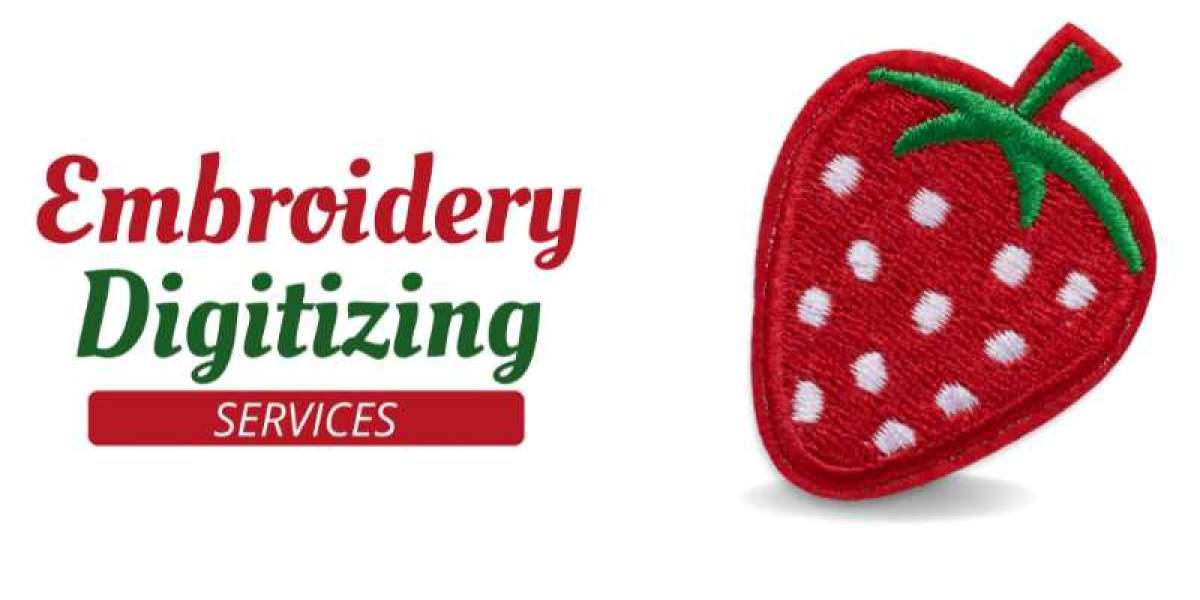Introduction to Embroidery Digitizing Services
Embroidery has always been a popular way to add a personal touch to fabric items. Whether for branding, gifts, or artistic expression, the demand for custom embroidery continues to grow. With advancements in technology, embroidery digitizing services have become essential for transforming designs into beautiful stitched creations. Understanding how these services work can help individuals and businesses get the most out of their embroidery projects.
What Are Embroidery Digitizing Services?
Embroidery digitizing services convert images or logos into digital formats suitable for embroidery machines. This process ensures that designs can be accurately reproduced on various fabrics. The quality of embroidery often depends on how well the design is digitized. Poor digitizing can lead to unsatisfactory results, such as misaligned stitches or unclear images.
Digitizing involves specialized software that creates a series of instructions for the embroidery machine. These instructions dictate how the machine will stitch the design, including the order of colors and types of stitches used. The outcome is a precise representation of the original artwork, allowing for both intricate details and vibrant colors.
Why Choose Professional Embroidery Digitizing Services?
While it is possible to digitize designs using basic software, professional services offer many advantages. Here are several reasons why opting for embroidery digitizing services is a wise choice:
- Expertise: Professionals have extensive experience in creating high-quality digitized files. Their knowledge of embroidery techniques ensures that your design will look great on fabric.
- Quality Assurance: Professional digitizers perform quality checks at various stages of the process. This attention to detail helps avoid common pitfalls that can occur during digitizing.
- Time Efficiency: Professionals can complete digitizing tasks much faster than individuals who are new to the process. This efficiency is especially beneficial for businesses with tight deadlines.
- Support and Consultation: Many digitizing services provide support and advice to help clients choose the best options for their designs. They can recommend stitch types and colors that enhance the final product.
- Advanced Technology: Professional services often use cutting-edge software and tools that can achieve results that basic software cannot. This technology allows for more complex designs and higher-quality stitching.
- Customization: Professional digitizing services can accommodate specific requirements, such as custom sizes or unique fabric types, ensuring that your design is perfect for your intended use.
The Process of Embroidery Digitizing
Understanding the embroidery digitizing process can help you appreciate the complexity involved. Here’s a breakdown of the steps typically taken when using embroidery digitizing services:
Step 1: Prepare Your Artwork
The first step in the digitizing process is preparing your artwork. This can be a logo, an image, or a custom design. It’s essential to provide a high-resolution version of your artwork. High-quality files ensure that the details are captured accurately during digitizing.
Step 2: Digitizing the Design
After the artwork is prepared, the digitizer uses specialized software to convert the image into a digital format. This software allows the digitizer to create a series of stitches that will replicate the design on fabric. The digitizer selects the appropriate stitch types and determines the order of stitching.
Step 3: Test Stitching
Before finalizing the design, many digitizing services perform a test stitch. This involves stitching the design onto a sample fabric to see how it looks. The test helps identify any issues that need adjustment. If the design doesn’t look right, the digitizer can make necessary changes to improve the final outcome.
Step 4: Final Adjustments
Based on the test stitching results, the digitizer will make any final adjustments to the design. This may include changing the stitch density, adjusting colors, or modifying the stitch sequence. The goal is to ensure the final product meets the client’s expectations.
Step 5: Delivering the Digital File
Once the design is perfected, the digitizing service will provide the client with a digital file ready for use in embroidery machines. This file contains all the necessary instructions for stitching the design accurately.
Choosing the Right Embroidery Digitizing Services Provider
Selecting the right provider for embroidery digitizing services is crucial for achieving the best results. Here are some tips to help you choose the right service:
Check Their Experience
When looking for a digitizing service, consider their experience in the industry. A company with a long history is likely to have encountered various challenges and learned how to overcome them. This experience translates to better quality and more reliable service.
Review Their Portfolio
Before making a decision, take the time to review the provider’s portfolio. Look for examples of their previous work, particularly designs similar to what you need. Assess the quality of the embroidery and how closely it matches the original artwork.
Read Customer Reviews
Customer feedback can provide valuable insights into the quality of the service. Look for reviews that mention aspects such as turnaround time, communication, and overall satisfaction. A company with positive reviews is more likely to deliver a good experience.
Ask About Turnaround Times
Depending on your needs, turnaround time can be critical. Make sure the digitizing service can meet your deadlines. It’s a good idea to ask about their process for handling rush orders if you have urgent needs.
Compare Pricing
While cost shouldn’t be the only factor, it’s important to find a service that fits your budget. Get quotes from multiple providers and compare their pricing structures. Keep in mind that the cheapest option may not always provide the best quality.
Evaluate Communication
Good communication is essential for a successful partnership. Choose a provider that is responsive and willing to discuss your needs and concerns. Clear communication helps ensure that both parties are on the same page throughout the process.
Request a Sample
If possible, ask the digitizing service for samples of their work. This allows you to see their quality firsthand and assess whether they are a good fit for your project.
Common Mistakes in Embroidery Digitizing
When using embroidery digitizing services, there are some common mistakes to avoid. Being aware of these pitfalls can help ensure a smoother process and better results:
Providing Low-Quality Artwork
One of the biggest mistakes is submitting low-resolution artwork. Low-quality images can lead to poor results, with unclear details and misaligned stitches. Always provide the highest quality files available.
Overlooking Fabric Choice
Different fabrics require different digitizing techniques. Failing to discuss your fabric choice with the digitizing service can lead to issues in the final product. Be sure to communicate the type of fabric you’ll be using.
Skipping Test Stitching
Some clients may be tempted to skip the test stitching phase to save time. However, this step is crucial for identifying any issues with the design. Always request a test stitch to ensure the final product meets your expectations.
Not Communicating Clearly
Clear communication is vital for a successful project. Be sure to communicate your expectations and any specific requirements you have. Failure to do so can lead to misunderstandings and unsatisfactory results.
Ignoring the Importance of Stitch Types
Choosing the wrong stitch types can negatively affect the final product. Work with your digitizing service to select the appropriate stitch types for your design and fabric to achieve the best results.
Being Unprepared for Changes
The digitizing process can sometimes require adjustments, especially after the test stitch. Be open to making changes to ensure the best outcome. Flexibility can lead to a better final product.
Trends Shaping the Future of Embroidery Digitizing Services
The embroidery digitizing landscape continues to evolve with technological advancements. Here are some trends shaping the future of this industry:
Increased Automation
As technology advances, more digitizing processes are becoming automated. Automated systems can speed up the digitizing process while maintaining high-quality results. This trend is likely to continue as technology improves.
Eco-Friendly Practices
Sustainability is becoming increasingly important in many industries, including embroidery. Many digitizing service providers are adopting eco-friendly practices, such as using sustainable materials and processes. This trend is likely to attract environmentally conscious customers.
Online Collaboration Tools
The rise of digital communication has made it easier for clients to collaborate with digitizing services. Online platforms enable clients to submit designs, provide feedback, and track progress seamlessly. This trend enhances customer experience and satisfaction.
Customization and Personalization
With the growing demand for unique items, many digitizing services are offering more customization options. This allows clients to create truly one-of-a-kind designs that reflect their personal style or brand identity.
Integration with E-Commerce
Many embroidery businesses are integrating digitizing services with e-commerce platforms. This allows customers to easily upload their designs, choose fabrics, and place orders online, making the process more convenient and efficient.
Focus on Training and Skill Development
As the industry grows, there is a greater emphasis on training and skill development for digitizers. Many companies are investing in professional development to ensure their teams are up to date with the latest techniques and technologies.
Conclusion: The Importance of Embroidery Digitizing Services
In conclusion, embroidery digitizing services play a vital role in the world of embroidery. By converting designs into digital files, these services make it possible to produce high-quality, consistent embroidery on a variety of fabrics. The benefits of using professional digitizing services are numerous, including speed, quality, and support.
When choosing an embroidery digitizing service, it’s essential to consider factors such as experience, portfolio quality, and customer feedback. By avoiding common mistakes and staying informed about trends in the industry, you can maximize the potential of your embroidery projects.
Embracing the technology and expertise that come with embroidery digitizing services will undoubtedly enhance your ability to create stunning embroidered items, whether for personal use or business purposes. With the right approach, your embroidery projects can stand out and leave a lasting impression.







